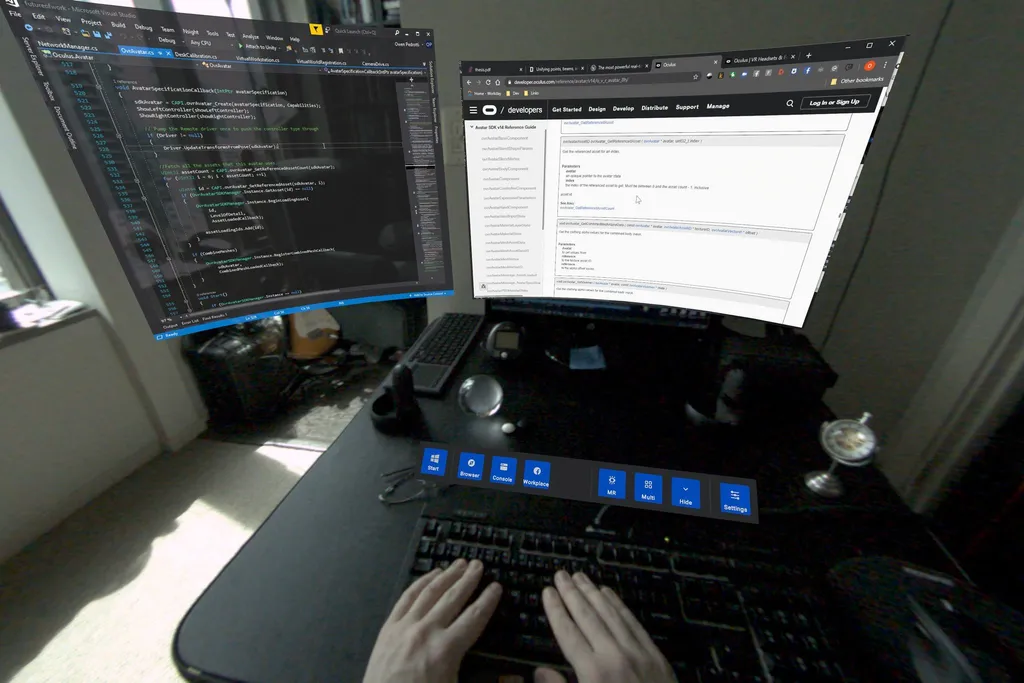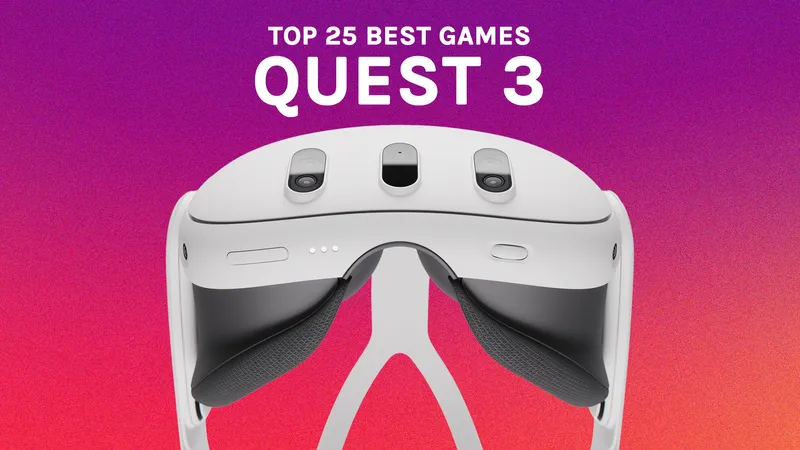One year on from the release of Oculus Quest, Facebook is showing a concept for a future VR personal workspace with support for real world passthrough.
“Tomorrow’s VR platform should improve upon the tools of today, but more important, it should enable entirely new ways of working. At the heart of this new experience is a flexible and infinite workspace that will allow teams and individuals to define their working environment from anywhere in the world.”
The demo shows a simple toolbar angled towards the user in front of them in passthrough mode, with a Windows Start button, as well as buttons for Browser, Console, Facebook Workplace, MR (Mixed Reality), Multi/Single, Hide, and Settings.
Above the toolbar the user’s PC windows are floating in space. Each is able to be repositioned by pinching and dragging with hands.
For a VR workspace to be truly usable, text input must be easy. While neural interfaces or completely new input devices may one day provide that, in the foreseeable future a keyboard is the only practical option.
Quest’s video passthrough is black & white with fairly poor quality. Interestingly, the passthrough in the concept has color and seems to have better legibility. Facebook may be exploring improving this for Quest’s successor.
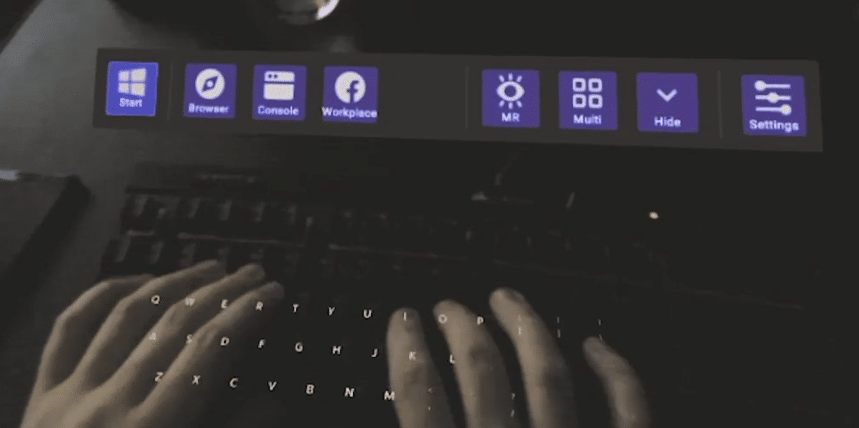
While the concept’s passthrough is better than Quest, keyboard keys are still not clearly visible. The software is overlaying each letter key in white text, giving the appearance of the user’s hands being translucent while making keys even more visible than in reality.
It’s not clear whether this would require manual calibration or involves a computer vision algorithm tracking the keys. Regardless, if this works it could finally make text input practical in VR.
In the end section of the concept video the passthrough is more saturated and the windows are hidden via the toolbar. The user’s hands are overlayed with a tracked virtual version of their hands.
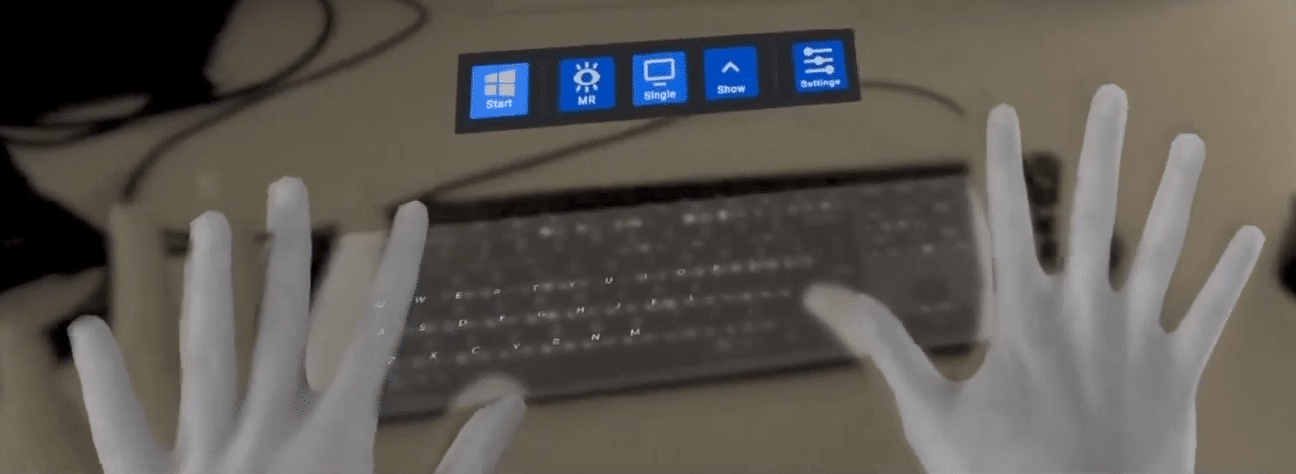
It’s a short clip, but watching closely the latency and accuracy of the hand tracking looks much better than Quest’s. Facebook says its engineers are “hard at work advancing the technology to enable better hand tracking”, but it’s unclear whether this refers to current or future hardware.
The previous windows are visible in the background on the monitor, suggesting this system obtains windows from your PC, rather than being a cloud based virtual machine.
“Turning this vision of tomorrow’s workplace into reality is one of our greatest goals at Facebook.”
Facebook hinted that with “networked social features”, such a workspace could allow for sitting alongside colleagues virtually, but isn’t going into more detail on that yet- other than to reiterate its research on photorealistic avatars.
The company warns those avatars are still “many years away”. In the short term, it says it’s exploring VR collaboration “with first-party solutions, system apps, and services”.
An infinte window workspace with usable mouse & keyboard has been a hypothetical “holy grail” of VR since the technology’s revival in 2012, and perhaps even before.
It’s not clear whether the concept shown today can work on today’s Oculus Quest- or if its PenTile displays even makes it practical.

But with improved cameras and a little higher resolution, VR headsets could soon become genuinely useful tools for work. Even while resolution is lower than real monitors, the ability to place windows in 3D anywhere around you would make it preferable for many use cases.
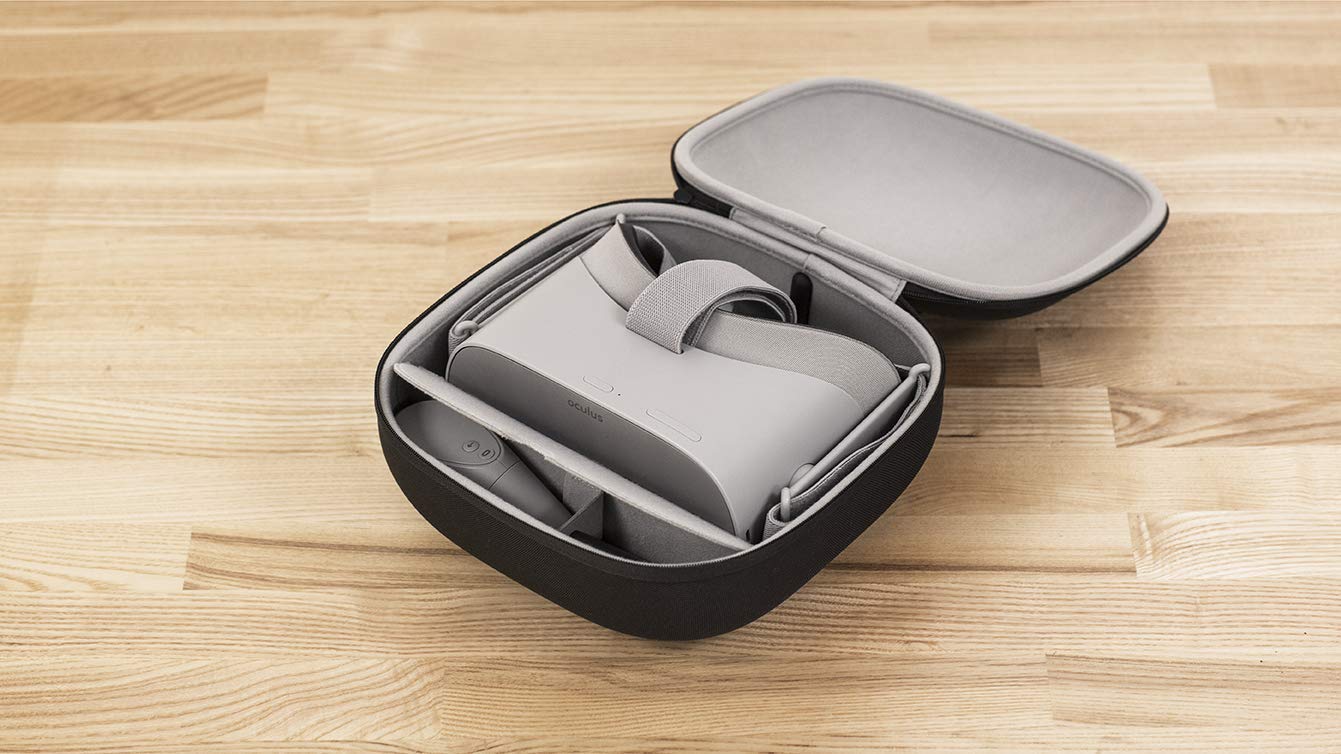
And of course, fitting into a small carrying case makes it a much more portable solution than multiple physical monitors.
For now, the closest way a Quest owner can get to this workspace is to set their home environment to Passthrough+ and enable multi-windows for Oculus Browser– or to access their PC in a virtual environment with Virtual Desktop.

